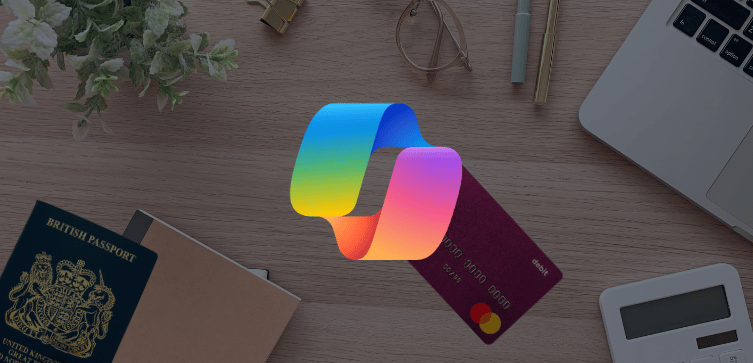Most organisations see Microsoft Copilot as either a productivity revolution or a security catastrophe waiting to happen. Both perspectives miss the real story. The biggest misconception about Copilot security is that organisations think they can bolt protection on after deployment. They treat it like “just another app” in Microsoft 365.
Copilot isn’t an app. It’s a window into your entire digital estate.
When you deploy Copilot, you’re giving every user a super-intelligent assistant with access to SharePoint, Teams, emails, files, chats and more. If your data is disorganised, misconfigured or overexposed beforehand, you’re simply making everything trivially accessible through natural language.
The fear that “Copilot will leak sensitive data” misses the point entirely. Copilot doesn’t create security risks. It exposes the ones you already have.
The Mirror Effect
One of our professional services clients recently discovered this reality during a Copilot readiness assessment. They had multi-factor authentication, basic compliance policies and Microsoft Purview for data classification.
Leadership was confident they were ready.
The assessment revealed a different story. SharePoint sites were shared with “everyone except external users,” including HR files and commercial contracts. Former contractors retained access to confidential client discussions in Teams. Sensitive files had been synced to personal OneDrive accounts without monitoring.
Most critically, their data classification wasn’t being enforced.
During a live simulation, we demonstrated what would happen if a junior employee asked Copilot to “summarise all HR salary files from SharePoint.” With existing permissions and poor classification, Copilot would dutifully comply.
The CFO’s reaction was immediate. This wasn’t theoretical risk modelling. This was showing leadership exactly what Copilot would do tomorrow if they switched it on today.
That clarity transformed security from a “nice to have” IT project into an urgent business priority.
The 80/20 Security Rule
When organisations have that realisation moment, they want to act immediately. The question becomes: where do you start?
Fix your permissions and access controls first.
This single step addresses 80% of the Copilot risk because the AI only shows what users can already see. If your permissions are right, Copilot becomes safe by design.
The approach is systematic, audit high-risk SharePoint sites and Teams channels where sensitive data lives. Apply the principle of least privilege ruthlessly. Remove stale access from former employees and contractors then standardise permission models across your environment.
One client summarised it perfectly: “We didn’t realise Copilot wasn’t the risk. Our sharing habits were.”
That mindset shift is powerful because it reframes the conversation from “How do we stop AI?” to “How do we govern our data properly?”
The Subtle 20%
Even with excellent permissions, there’s a remaining 20% of risk that catches well-governed organisations off guard.
Data Classification Gaps Represent the Biggest Hidden Vulnerability
Copilot can’t know what’s sensitive unless you tell it. A contract with confidential pricing terms might be stored in the right location with appropriate permissions, but without proper classification, DLP and Conditional Access policies can’t protect it consistently.
Chat & Email History Exposure Creates Another Blind Spot
Copilot’s context window includes Teams conversations, meeting transcripts and email threads. Even with good file permissions, sensitive details shared in casual chats can surface through AI queries.
Guest Access Management Often Reveals Forgotten Vulnerabilities
External partners, contractors and vendors might retain access they no longer need. Almost all organisations surveyed (97%) say they have encountered breaches or security issues related to the use of Gen AI in the past year, underscoring how overlooked access patterns can turn into real-world exposures. In fact, 67% of enterprise security teams express concerns about AI tools exposing sensitive information—especially where legacy permissions and forgotten guest access are still in place.
The solution requires a holistic approach: permissions audit, data classification strategy, guest access review, DLP tuning and ongoing governance.
The Business Case for Getting It Right
Security discussions often focus on risk mitigation. The real story is business transformation.
When Copilot is deployed securely, the productivity gains are measurable and significant. Forrester research shows Microsoft 365 Copilot can deliver 132% to 353% return on investment for small and medium businesses over three years.
The numbers are compelling when you break them down.
A mid-market financial services firm with 500 employees modelled conservative time savings of 30 minutes per person per day. That translates to 55,000 hours saved annually, worth £2.2 million in productivity at average loaded costs.
Document drafting becomes 30-50% faster. Meeting summarisation reduces administrative overhead by 25-40%. Decision-making accelerates when leaders can query, “Show me all open incidents with client X,” and receive instant, accurate responses.
But you only capture these gains if employees trust the tool.
Trust isn’t built through policy. It’s earned through transparency, proof and consistent results.
Successful organisations start with clear communication about what Copilot does and doesn’t do. They demonstrate that security controls are in place and working. They provide role-specific training that shows practical value while reinforcing compliance.
Most importantly, they deliver early wins that build confidence and drive adoption.
Future-Proofing Your AI Strategy
Copilot represents the beginning, not the end, of AI integration across Microsoft’s ecosystem. Microsoft processes over 78 trillion security signals daily and continues embedding AI into Defender, Sentinel, Power BI and beyond.
The organisations that thrive will treat AI readiness as an ongoing capability, not a one-time project.
This requires shifting from perimeter security to data-centric protection. AI operates inside your network boundary, so you need to control what trusted users and applications can access. Zero Trust becomes essential, not optional.
Identity and access governance must be prioritised. AI doesn’t guess about permissions; it executes based on what it’s given. Sloppy lifecycle management gets amplified when every employee has an AI assistant with perfect memory.
Data Loss Prevention and Insider Risk Management become critical for preventing well-meaning employees from accidentally exposing sensitive information through AI interactions.
The key is building continuous security maturity in your operations. Annual assessments, regular policy reviews and ongoing improvement budgets ensure you stay ahead of both threats and opportunities.
The Strategic Decision
For leaders still hesitating about Copilot adoption, consider this perspective: if you’re not ready for Copilot today, you’re probably not prepared for your data to be safe tomorrow.
Copilot doesn’t introduce new risks. It exposes existing security debts.
Overly broad permissions, weak data classification, stale access controls and poor governance practices create vulnerabilities whether you deploy AI or not. Copilot makes these problems visible and urgent.
Your competitors aren’t waiting. Early adopters are seeing 20-30% productivity gains in knowledge work for professional services, legal, finance and healthcare organisations, which represents a transformative competitive advantage.
Waiting another year doesn’t avoid risk. It means missing efficiency gains, falling behind on innovation and struggling to retain talent who want these tools.
The question isn’t “Should we do Copilot?” It’s “How do we get ready to do Copilot well?”
AI readiness demands organisational maturity, not just technical controls.
Cross-functional alignment between IT, Security, HR, Legal and business units becomes essential. Leadership must champion the initiative, not just approve the budget. Security transforms from a technical barrier into a business enabler.
When organisations approach AI adoption as strategic business change rather than a technology project, they don’t just make Copilot safe. They build resilient, competitive, future-ready operations.
At CyberOne, we help mid-market organisations bridge this gap through performance-led security that enables innovation rather than constraining it. Our Microsoft 365 Copilot Readiness service provides the assessment, remediation and governance frameworks needed to adopt AI confidently.
The conversation worth having isn’t about switching Copilot on safely. It’s about building a business ready for AI, securely and sustainably.
That’s how you move from “maybe next year” to leading your industry forward.


